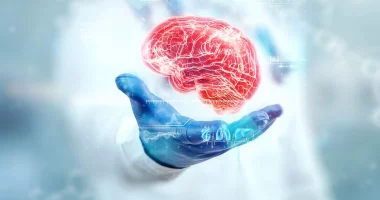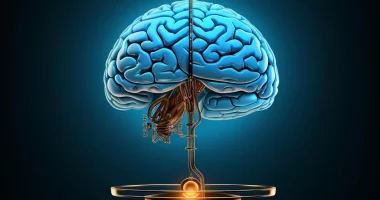Autism spectrum disorder (ASD) is a condition that affects how the brain develops and works. People with ASD, or simply autism, might find it hard to talk to others and make friends. They might also do the same things over and over again, and it can be tough for them to do well in school or at work.
This article talks about what autism is like, what causes it, how doctors diagnose it, and ways to help people with autism. It also looks at what it’s like to live with autism or take care of someone who has it.
Characteristics
Autism Spectrum Disorder (ASD) presents itself in various forms and intensities, creating a spectrum of traits unique to each individual. Unlike other medical conditions, ASD does not adhere to a singular set of defining characteristics, yet certain common traits prevail. Approximately one-third of individuals diagnosed with ASD also experience intellectual disabilities.
Broadly categorized, these characteristics encompass three main areas like interaction and communication skills, repetitive or extremely focused behaviors, and other distinguishing characteristics. Within the realm of interaction and communication, individuals with ASD may exhibit avoidance or minimal engagement in eye contact, delayed responses to their names, infrequent sharing of interests or emotions, and challenges in maintaining back-and-forth conversations. Their speech patterns may also feature a robotic tone.
Repetitive or extremely focused behaviors are often evident in their reactions to minor changes in routine, repetitive actions or verbal expressions, and a deep-seated fascination with specific topics or facts. Additionally, individuals with ASD may display delayed motor or language skills, cognitive learning delays, and inattentive, impulsive, or hyperactive behaviors.
Despite these challenges, many autistic individuals possess unique strengths, though not necessarily characteristic of autism itself. These strengths may include proficiency in auditory and visual learning, exceptional long-term memory retention, and a penchant for acquiring knowledge with meticulous attention to detail.
Causes
The main reason why people develop Autism Spectrum Disorder (ASD) is still a mystery. But scientists believe that a mix of things like genes (the traits we inherit from our parents), biology (how our bodies work), and the environment (where we live and grow up) all have a part to play.
For instance, a person’s genes could combine with things in their environment to influence how they grow and develop, which might result in them being diagnosed with autism. Some studies have looked at factors like not getting enough of certain nutrients in food and how they could make autism more likely. But these studies have limits, and we need to do more research to understand better.
Autism can affect anyone, but some people are more likely to have it. These include:
- Being born as a boy (boys are four times more likely than girls to have ASD).
- Having specific genetic conditions, like fragile X syndrome or Down syndrome.
- Having parents who are older when they have children.
Diagnosis
Doctors and other healthcare providers can figure out if someone has autism by watching how they grow and act. They use different tools to help them decide. But it’s important to know that just one tool isn’t enough to say for sure if someone has autism. Some of these tools are:
- ADI-R (Autism Diagnosis Interview-Revised)
- CARS (Childhood Autism Rating Scale)
- ADOS-G (Autism Diagnostic Observation Schedule–Generic)
- GARS-2 (Gilliam Autism Rating Scale–Second Edition)
- American Psychiatric Association’s Diagnostic and Statistical Manual of Mental Disorders
These tools use two main sources of details:
- The doctor’s own observations of how the child acts.
- What the child’s parent or caregiver tells them about the child’s growth and behavior.
Sometimes, the doctor might send the parent or caregiver to another specialist to help make a diagnosis.
There are also tools to check if a child might be having trouble with their development. These tools don’t specifically look for autism, and they don’t give a diagnosis. They just give information to help with further checking. Some of these tools are:
- CSBS (Communication and Symbolic Behavior Scales)
- STAT (Screening Tool for Autism in Toddlers and Young Children)
- PEDS (Parents’ Evaluation of Developmental Status)
Treatment
Treating autism involves getting help from different kinds of doctors and therapists in different places, like school or home.
Since autism affects everyone differently, treatment is different for each person. The main aim of treatment is to help people with autism do better in their everyday life and feel happier.
Here are some types of treatments:
- Developmental: This includes things like speech and language therapy, which help with talking and understanding words.
- Social-relational: These treatments, like joining social groups, help with making friends and understanding social rules.
- Behavioral: One type is called applied behavior analysis (ABA), which helps with learning new behaviors and skills.
- Educational: This type, like the TEACCH approach, helps with learning in school by using special methods.
- Psychological: Cognitive behavioral therapy (CBT) is a type of talk therapy that helps with managing emotions and behaviors.
- Pharmacological: This involves using medications to help with things like focusing better, but there are no medications that directly treat autism itself.
- Complementary and alternative medicine (CAM): Some people try things like art therapy or spending time with animals to help with autism symptoms.
Complications
Autistic individuals often face additional challenges beyond their core autism traits, which can significantly affect their everyday existence and general well-being. These complications encompass a variety of conditions, including seizure disorder or epilepsy, gastrointestinal problems like constipation, and atypical eating or sleeping patterns. These issues can disrupt their daily routines and comfort levels, adding further complexity to their lives.
Moreover, autistic individuals may contend with heightened levels of stress, anxiety, or persistent worry, exacerbating their already intricate experiences. Their emotional responses may also deviate from what is considered typical, leading to abnormal reactions or mood fluctuations that can be difficult to navigate. Additionally, some individuals may exhibit either an exaggerated sense of fear or a notable absence of fear, further contributing to the array of challenges they face in their daily lives.
Living with Autism Spectrum Disorder
Living with Autism Spectrum Disorder (ASD) presents daily challenges for both individuals with autism and their families. However, accessing available resources and establishing realistic expectations can greatly alleviate some of the difficulties.
Navigating daily life with autism requires support from various sources. Even for those with relatively low support rerquires, the journey can be arduous. Here are some tips aimed at making each day a bit smoother:
- Prioritize maintaining primary healthy habits, such as regular exercise and ample rest, to lay a strong foundation for daily life.
- Regular examination with healthcare providers who are knowledgeable about autism are crucial for overall well-being.
- Prepare in advance for any changes or transitions, as these can be particularly challenging. Allowing more time to process and adjust to the new situation can help ease the transition.
- Seek out support groups where you can connect with others who realize autism. Sharing experiences and learning from others’ journeys can provide invaluable support and guidance.
By implementing these strategies, individuals with autism and their families can better navigate the complexities of daily life and find greater support and understanding within their communities.
Outlook
Living with autism or taking care of someone who has it can be tough and can make everyday life harder.
Treatment, although it may seem intense and structured, can actually make life better. The earlier someone is diagnosed with autism, the better it is because they can start treatment sooner and see its benefits sooner too.
Summary
Autism Spectrum Disorder (ASD) is a developmental condition that affects how the brain grows and works. People with ASD might struggle with communication and social interactions, show repetitive behaviors, and face challenges in various aspects of daily life. While the exact cause of ASD remains unknown, factors like genetics, biology, and the environment are believed to play a role.
Diagnosis involves observing behaviors and developmental patterns, often using multiple assessment tools. Treatment approaches, tailored to individual needs, include developmental, behavioral, educational, and psychological interventions, aiming to improve daily functioning and quality of life. Despite the challenges, early diagnosis and appropriate support can significantly enhance outcomes for individuals with ASD and their families.









